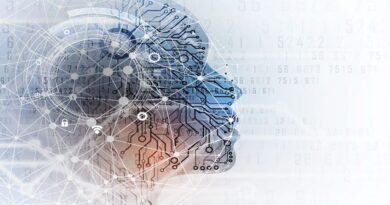Can human-centered MLOps help AI live up to hype?
The concept of “human-centered AI” has permeated the artificial intelligence zeitgeist over the past couple of years. That is thanks, in part, to organizations such as Stanford’s Institute for Human-Centered AI (HAI), which launched in 2019.
But according to Dr. Vishal Sikka, founder and CEO at Palo Alto, CA-based Vianai Systems (who was also formerly CEO of Infosys and serves as an advisory council member at HAI), human-centered AI is more than a hyped buzzword or philosophical framework. While it focuses on how AI can amplify and enhance human performance, it is about helping enterprises build and manage better AI.
Enterprises need to understand the state of their AI landscape how many models they have, what they do with them, what the models are supposed to do, are they doing what they are supposed to do.” Dr. Vishal Sikka, founder and CEO at Palo Alto
To that end, the company’s newly launched Vian H+AI MLOps Platform combines several open-source tools, proprietary techniques and optimizations and design thinking, with the goal of providing a foundation to bring human-centered AI systems to the enterprise at scale. A unified user experience allows MLOps engineers to quickly operationalize models, regardless of the tools used by data scientists to create those models; as well as plug and play and make decisions on components without changing the API.
Supporting human decision-making with AI
The new tools are intended to help enterprises harness the full promise and potential of AI to drive their businesses, Sikka explained, while ensuring that AI and ML modes are responsible, explainable and ethical, and, at the same time, supporting human decision-making rather than replacing it.
That requires that our tooling takes a step back to a meta-theoretic perspective on a model, to try to understand its limitations, what are the areas where it produces false positives and false negatives? Is it happening more than it was happening when we trained the model or when we built the model? Can we look inside that and see what kinds of uncertainty exist the uncertainty in the data, or in the model?” Dr. Vishal Sikka, founder and CEO at Palo Alto
The result is meant to address enterprises’ unique AI needs, but from a human perspective. For example, Sikka points to a system Vianai built using the MLOps platform for one of the world’s largest banks, which helps property assessors better assess their properties.
“Traditionally, they look at comparables and do adjustments based on whether, say, the property has a swimming pool, or crime in the area was worse, or the noise from the freeway was better,” Vianai was able to help the company understand over 20,000 more comparables and a hundred times as many adjustments.
In the end, it is they who make the decision on the value of the property, rather than doing it automatically, we gave them the tools for assessors to analyze the information far faster, on far larger amounts of data, than they were ever able to do.” Dr. Vishal Sikka, founder and CEO at Palo Alto
Sikka, who is also a current member of Oracle’s board of directors and a supervisory board member at BMW, said Vianai has spent the past three years building the new MLOps platform, which he said addresses two fundamental, longtime enterprise AI challenges.
Addressing performance and risk management
The first is helping enterprises get better performance from AI by accelerating model speed and throughput even on commodity hardware. “AI has become an incredible hog of computing,”
For example, Schneider Electric, one of the world’s largest electronic manufacturing companies, had equipment sitting in remote areas far from the cloud, including factories, in oil fields and on ships. The company had a few dozen complex AI models that ran on edge devices that were distributed globally. But they ran too slowly around a frame per second of images. The MLOps platform dramatically improved runtime and deployed optimized models to the edge devices.
One solution would be to get much more expensive and bigger equipment, but even if you could get that equipment there, it would take an incredibly long time to get the machines upgraded, We made it possible for them to run many thousands more frames per second, on the same hardware.”
The MLOps platform also addresses risk monitoring capabilities, such as data quality and integrity, drift, uncertainty, bias and explainability. The enterprise needs the ability to get a handle on what the limitations of these models are, Fundamentally, it comes down to whether the company understands what a model does? Can a risk officer or operations person understand the risks and governance around the model?” Dr. Vishal Sikka, founder and CEO at Palo Alto
Human-centered AI requires design thinking
In order to understand those boundaries, or the limitations of an AI model, “you have to transcend it,John McCarthy, the father of AI, used to call it ‘trying to understand the reality behind the appearance.’
Ultimately, he explained, human-centered AI is a “humble” AI that seeks to amplify human work and improve human judgment. To do that requires the power of design thinking that is, understanding the reality of how humans will engage with the AI.
The point of machine learning is to improve the human situation, not to replace the judgment of the person, you can’t have human-centered AI without understanding the design of the AI activity, how it plugs into human decision-making.” Dr. Vishal Sikka, founder and CEO at Palo Alto




